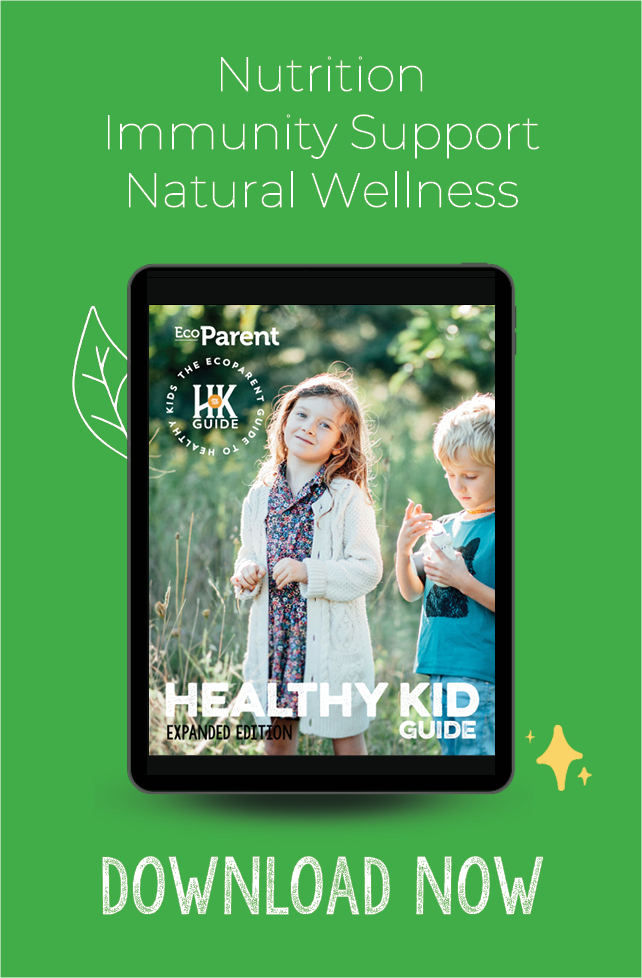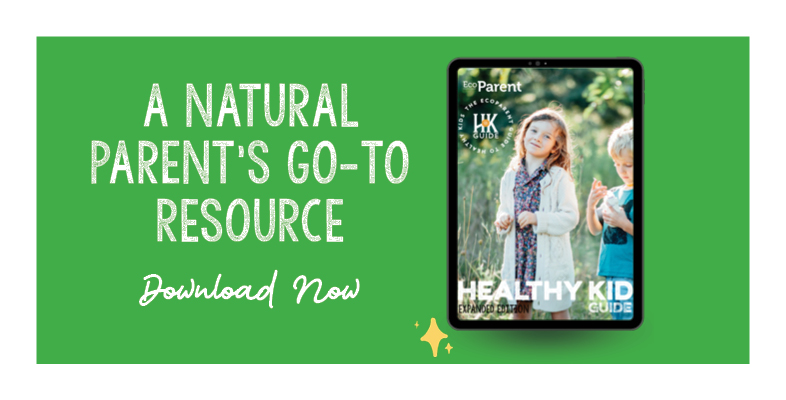Fevers have an unfortunate reputation these days. They can evoke worry, fear, and a feeling of complete uncertainty about what the heck to do. People are often surprised when I tell them that as a naturopathic doctor, my goal is to support the fever (unless there are signs of emergency, which I will discuss below).
Let’s learn a little bit more about what a fever is, the benefits of fever, and how to know when it is safe and preferable to manage it at home using natural, gentle therapies any parent can do.
What is a fever?
A fever is not actually the illness. A fever is our body’s natural response to fighting an infection.
The body elevates its temperature to effectively slow or even kill the invading microbes. It also functions to stimulate our immune systems into microbe-fighting battle mode! For children, the severity of the fever is actually a poor predictor of the severity of the illness.
- A fever is defined as: anything over 37.8˚C (100˚F), orally.
- A fever of 39˚C (102.2˚F) to 39.4˚C (103˚F) is considered the optimal temperature for microbial defense.
- A fever over 39.7˚C (103.5˚F) is considered high.
- Any fever over 40˚C (104˚F) requires immediate medical attention.
What are the benefits of a fever?
- Makes us feel tired, encouraging the deep rest we require to fight the infection.
- Increases the cells that attack the invading microbes.
- Increases cells that block the spread of viruses to other healthy cells.
- Protects our iron stores, which bacteria like to feed on.
- Helps the body recover faster and decrease complications of certain infections.
When is a fever something to be worried about?
While there are many benefits to a fever, there are situations where we want to seek medical attention.
- Infants less than 8 weeks old with a fever should be seen by your doctor immediately.
- Babies from 1–3 months with a high fever (see above) or a fever over 38˚C and who appear ill.
- Anyone with a temperature over 40˚C.
- A fever that stays high for more than 3-5 days.
- Changes in consciousness, confusion, or unresponsiveness.
- Signs of dehydration (dry mucous membranes, depressed fontanelles, “tenting” of skin where if you gently pinch the skin, it takes a longer time to return to normal).
- Ongoing vomiting and/or diarrhea and not drinking.
- Any child with a fever along with a stiff neck, persistent vomiting, or severe headache.
- If your child has a noticeable decrease in urination and/or is not taking in fluids.
- If your child is lethargic, unusually sleepy, seemingly weak or limp.
- If your child seems to be in extreme amounts of pain.
- If your child has a febrile seizure.
- When it just does not seem “right” to you—trust your parental instincts!
A word about seizures
Febrile seizures happen when a fever starts to climb too high. Around 2–5% of children will have at least one, and the likelihood increases with every seizure experienced. These can be very scary to witness. It is important for the parent or caregiver to try to remain calm, use first aid measures and focus on observing the child.
The majority of febrile seizures are short and do not cause any long-term damage. Research has shown that children who had febrile seizures performed just as well as other children in terms of academic progress, intellect, and behaviour. The risk of your child developing epilepsy increases only by 0.5%. The National Institute of Neurological Disorders and Stroke has a great information page about febrile seizures and how to manage them. It is most important to note the start time of the seizure. If it lasts longer than five minutes, call 911.
Fever management
- Assuming all emergency situations are ruled out, you do not actually have to treat the fever itself. The fever is working hard to get your child healthy again, so you want to support your child through it. The most important aspect of fever management is to encourage rest and hydration.
- Create a calm environment for your child to rest. Keep them home from daycare or school. Allow them to rest as much as they want, periodically waking them to take a few sips of fluids.
- You want to encourage your child to drink plenty of cool fluids to prevent dehydration, which can occur more easily during a fever. Nurse your baby as often as they will drink. In the case of a very young infant, continue to breastfeed while waiting for treatment, as breast milk has antibodies that will help them fight the infection. Experiment with offering different fluid options. Water, herbal teas, natural fruit juices, or homemade popsicles all make great options. Try to avoid sugary drinks, as sugar will depress their immune response.
- Herbal teas that are safe for children and help to calm and maintain fevers in a healthy range are chamomile, catnip and lemon balm. Pick one or equal parts of all three! Children can have ¼ to 1 cup every few hours. It is safe to give 1–2 eye droppers of herbal tea to children under one. Alternatively, mom can drink the tea throughout the day, as some benefits will pass through the breast milk. You can also take the brewed tea and mix with an equal amount of natural fruit juice. Pour into freezer pop molds and voila! Who doesn’t want a nice cold popsicle when they’re sick?
- Monitor their temperature frequently. It is not unusual for the fever to go up and down throughout the day.
- Tepid baths can be relaxing and provide relief for your child. Do not give a cold bath, as this can cause the blood vessels in the skin to constrict. You can prepare a pot of chamomile tea and add several cups to the bath water. This can help to calm a restless child and provide some relief from any aches or pains.
- To allow the heat to be released, avoid having too many layers on your child. If your child has chills, apply a hot blanket for 5-10 minutes. Cold compresses to the forehead and neck can provide comfort and relief. And of course, lots of love and cuddles throughout the day!
Should I give my child acetaminophen?
This is one of the most common questions I hear in regards to fever management. Acetaminophen has been shown to only bring down a temperature by about 1 degree. It can help to relieve aches and pains, but also has side effects with extended use. My recommendation is to always try to use the natural management strategies above first. Remember, we want the fever to do its job. If however, your child is so uncomfortable they will not sleep and will not let you sleep, trying acetaminophen is definitely an option. Rest is crucial for both you and your child. Always use the recommended dose on the bottle.
Fevers are good (usually)! They are fiery fighters of nasty bugs! As long as it’s in a safe range for your child’s age, with no emergent signs or symptoms, remember: rest, hydration, and lots of love.
*Originally published January 14, 2016









